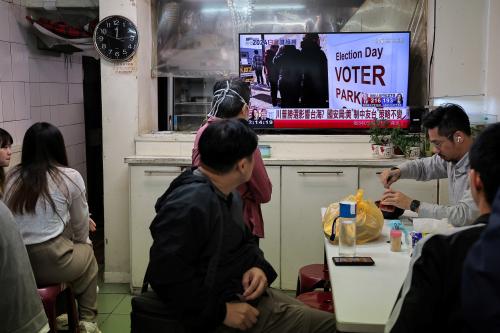Recent foreign policy steps by the United States—such as walking away from the Kyoto Treaty, trashing the Anti-Ballistic Missile Treaty, toughening its approach to North Korea and China—put a spotlight on efforts by other countries to form their own sets of cooperative multilateral mechanisms which do not include the United States. One of the
most interesting, but little known, efforts of this kind in Asia is the “Shanghai Five Process.” The Shanghai Five process has quietly, but steadily, built up its economic, military, and diplomatic relations, and seeks to present itself as more viable counterweight to U.S. influence in Central Asia.
The Shanghai Five consists of China, Kazakhstan, Kyrgyzstan, Russia and Tajikistan, and emerged from a series of border demarcation and demilitarization talks which the four former Soviet republics held with China. Since 1996, when the group held its first presidential summit meeting in Shanghai, the five-country group has held annual summits eversince. With each passing year, the joint statements to emerge from the summits have signaled greater and greater cooperative efforts in trade, culture, military and security affairs. For example, the statement from the July 2000 Dushanbe summit notes the establishment of a “Council of National Coordinators” which will further foster regularized cooperation amongst the five.
In addition, the joint statements are devoting more space to the group’s view of the international security situation both within and beyond their borders. The Dushanbe statement, for example, pledges the five countries to jointly crack down on liberation movements, terrorism, and religious extremism in their borders and, in an interesting quote, to “oppose intervention in other countries’ internal affairs on the pretexts of ‘humanitarianism’ and ‘protecting human rights;’ and support the efforts of one another in safeguarding the five countries’ national independence, sovereignty, territorial integrity, and social stability.” Chinese President Jiang Zemin, in his speech before the group last year, appeared to go a little farther when he said, ” We should strengthen mutual support in safeguarding the national unity and sovereignty of our nations and resist all kinds of threat to the security of the region.”
With these aims in mind, the Shanghai Five group has also agreed that their defense ministers should meet on an annual basis (their foreign ministers already hold annual meetings) and their militaries should be more active in conducting joint exercises and training, exchanging information about peacekeeping operations, and holding conferences and other exchanges.
Moreover, in thinly-veiled references critical of U.S. policy, the Dushanbe statement also noted the group’s opposition to “use of force or threat of force in international relations without the UN Security Council’s prior approval and…any countries or groups of countries’ attempt to monopolize global and regional affairs out of selfish interests.” In similar terms, the Dushanbe statement also expressed its opposition to U.S. missile defenses by stating its strong support for the Anti-Ballistic Missile (ABM) Treaty of 1972 and its opposition to “bloc-based” (i.e., US alliance-based) deployment of theater missile defense systems in the Asia-Pacific region, particularly in Taiwan.
The Shanghai Five are quick to point out that the group is not an alliance, and is not aimed at any third parties. Indeed, the group has a number of internal differences which will likely prevent it from becoming more like an alliance. The two biggest countries in the group—China and Russia—can profess much improved relations over the past 10 years, but still harbor long-term strategic suspicions about one another. In addition, individual members of the group differ over other important issues, such as relations with various neighbors such as India, Pakistan, and Afghanistan’s Taliban, and over how to best exploit the rich reserves of energy and other natural resources in Central Asia. Russia’s President Putin appears to welcome additional members to the group (Uzbekistan, Pakistan, Iran, and India have expressed an interest), which, if admitted, would certainly complicate the achievement of consensus within the group.
At the moment, the Shanghai Five process has resulted in some impressive achievements, such as settling the parties’ border disputes, introducing confidence-building measures, and moving in cooperative ways to combat illicit activities in their region such as terrorism and drug smuggling. They have also stuck together and issued increasingly tough statements in opposition to what they see as U.S. “hegemony.” But it may be more difficult for the group to get much beyond this stage.
Nevertheless, the Shanghai Five is indicative of efforts elsewhere in the world which are seeking security-related mechanisms without the participation of the United States. It is expected that around the time of the next Shanghai Five meeting this coming July in China, Beijing and Moscow will have issued a new, more formal accord to govern their “strategic partnership”, and we should expect a similarly more robust set of agreements to come out of the Shanghai Five as well. This will mark a new stage in the efforts of countries such as Russia and China to find ways to assert themselves more effectively in a world they see as dominated by the United States. It is a trend worth watching.

Commentary
Op-edShanghai Five: An Attempt to Counter U.S. Influence in Asia?
May 4, 2001